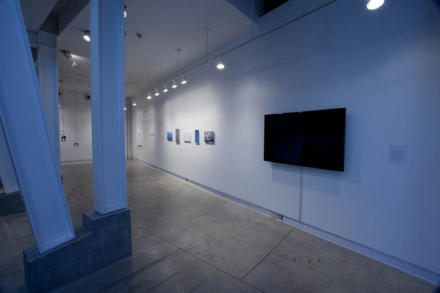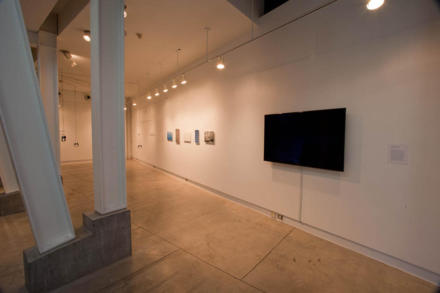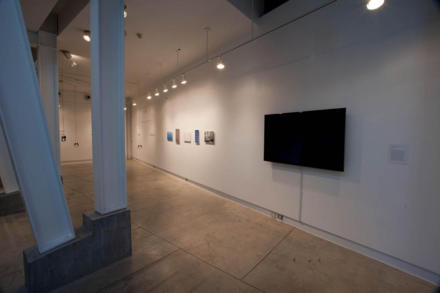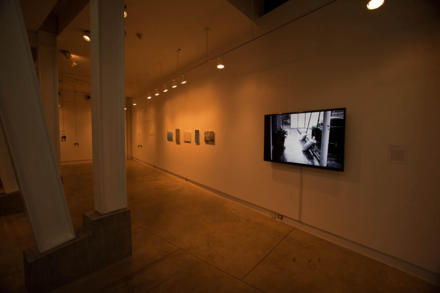Whatever Strikes my Fancy.
Your eyes don't work like you (likely) think they work. As you look at the world your eyes and brain are constantly adjusting to different light levels, different light temperatures, changing the focus, and ignoring lens distortions and other anomalies.
A portion of my "day-job" photography involves making images of art installations at the gallery where I work and affiliated galleries where we participate in presentations. What I do to make these images look "right" goes unnoticed, because it's designed to. I only want you to see in the image what you would see with your eyes in the gallery. However, doing that with a camera is not as straightforward as point-and-shoot.
| This is an image of what you would have seen in the Belkin during our The Spaces Between: Contemporary Art from Havana show if you were standing just inside the front entrance and facing right. |
 |
| This is one of the source photographs in the composite, shot at f22 to have everything in focus and the monitor turned off to avoid reflections on the floor from the image on the monitor. The image is white balanced for the spots in the gallery, which are at roughly 2800 °K, making the light bleeding in from the out-of-frame glass doors and the 2nd level window above appear blue. |
 |
| This is the same as the image above, but white balanced for the sunlight (5500 °K), making the lights from the spots look very warm. |
 |
| This is a third white balance, specifically for the mixed light hitting the wall near the monitor and the pillar in the foreground. |
 |
| And finally this is an image from exactly the same angle at a much lower f-stop, resulting in a shallower depth of field where I'm only concerned with getting the monitor in sharp focus, with a fast enough shutter speed so there is no motion blur in the image on the monitor, and white blanced for the monitor. |
 |
The four images are combined. The different white-balanced images are carefully blended together so that the walls, floor and pillars are all as they are perceived in real life. The image on the monitor has its true colours as it is percieved. All the specs of dust that show up in the f22 shot are cloned out. And lastly the lens distortion is removed (which you will see most clearly by toggling between the composite and the first f22 exposure in the side display below and keeping your eye on the pillar in the foreground, if you are viewing the orginal post. If you are viewing this via a repost to another site, follow the source link.)